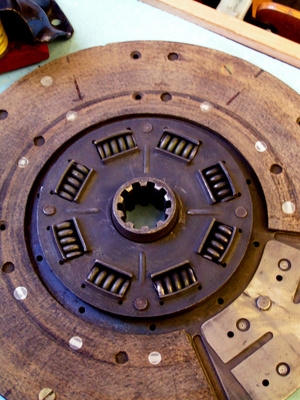
Automotive clutch problems can be unsettling due to the time and expense involved in repairing the problem. There are, however, simple tests to zero in on what is needed. At best, a clutch hydraulic fluid service could be the remedy; on the other hand, a complete clutch replacement may be called for. Test the hydraulic system first, and the mechanical system second.
Locate the clutch master cylinder on the firewall near the brake master cylinder. Remove the clutch master cylinder cap and inspect the fluid. If it is discolored and feels gritty when rubbed between the fingers, it will need to be flushed and replaced. Follow the steel or plastic tube from the clutch master cylinder to the clutch slave cylinder mounted on the transmission. Inspect both cylinders for oily residue caused by leaks.
Have an assistant press the clutch pedal while examining the slave cylinder. The slave cylinder operates properly by extending a small rod to press against the clutch fork. If the clutch fork fails to move, the hydraulic system will need to be replaced. If the slave cylinder is housed inside the transmission, and the clutch pedal moves with no resistance, the transmission must be removed and the hydraulic system replaced.
Depress the clutch pedal and shift the transmission into second gear. Start the engine, press the brake pedal, then slowly release the clutch. A strong clutch disk and pressure plate will firmly hold and the engine will shudder and die. If the engine does not die, the clutch is slipping and must be replaced.
Depress the clutch pedal with the engine running to test the throw-out bearing. The throw-out bearing allows for a smooth transition while releasing the clutch from a rotating engine flywheel. If there is a growling sound when the clutch pedal is depressed while the engine is running, the throw-out bearing is defective and must be replaced.